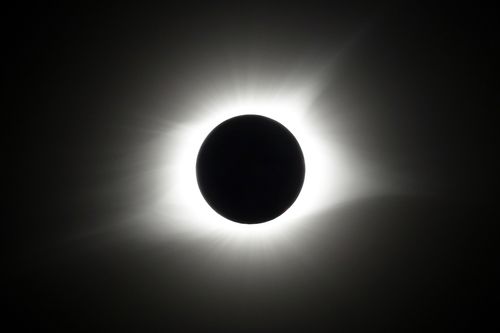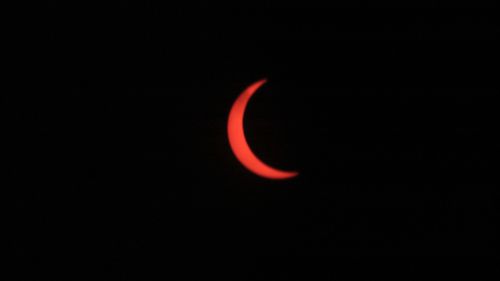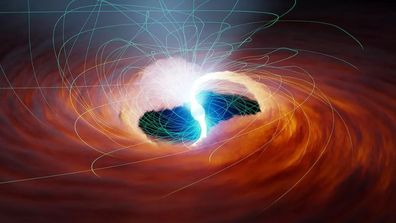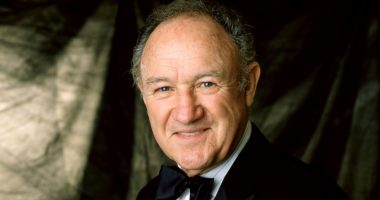In just hours Australians will have a chance to witness a rare total solar eclipse, which will see the sun transformed into a mere halo as the moon blocks it from view.
The best place on earth to see the celestial event, which sees the sun, moon and earth perfectly align, will be in Exmouth on Western Australia’s Coral Coast.
WATCH LIVE: We will livestream the total solar eclipse from 1pm AEST at 9news.com.au on Thursday

Exmouth Shire Council President Darlene Allston said years of planning have gone in to prepare the region for the influx of visitors.
An observation platform has been erected, and today special purpose solar eclipse glasses will be handed out to eclipse gazers.
“We have done all we can do to sort of deliver the safe event for all of the people that have travelled here today,” Allston said.
“So it is going to be busy here and certainly all eyes I suppose will be on Exmouth for that 62 seconds of darkness today.”

Dr Karl Kruszelnicki said Australian’s were “lucky” to witness the event.
“It is actually a hybrid eclipse,” he explained.
“So for part of the eclipse it will be a total eclipse. For part of it will be a ring depending where you are.
“It is lovely to see the fingernail moon. The universe is giving us something for free. We are lucky.”
Kruszelnicki added that staring directly at the sun is not recommended as even a brief glimpse can cause eye damage.
“If you can see any of the actual sun surface, turn away,” he said.
“Do not look at it with the naked eye.”
Read Related Also: Who are the Magcon Boys? Wiki Bio, members, ages, girlfriends, net worth
Instead, eclipse gazers are urged to use special-purpose “eclipse glasses” or hand-held solar viewers that meet international standards.
Alternatively, a pinhole projection through a large card can be used.
This type of viewer can be easily made at home.
So when will the eclipse start?
That all depends on your location.
In Exmouth, the partial eclipse is said to start 10:04 AM (AWST) with totality – when the sun is blocked by the moon – beginning around 11:29am.
Totality will last for 58 seconds.

This dead star breaks every law of physics
For the other capitals totality won’t be achieved, however this is when the partial eclipse will begin:
When will next eclipse occur?
The total eclipse today is one of two eclipses to occur in 2023, but it’s the only one to be visible in Australia.
On October 14 an annular (“ring”) eclipse will sweep across western and southern US, Mexico’s Yucatan Peninsula, Central America, southern Colombia and northern Brazil.
The next total solar eclipse to be observed in Australia will be on July 22, 2028, which will cross from the Kimberley to Sydney.
The last total solar eclipse occurred in 2012 and plunged Cairns into darkness, while WA’s last total solar eclipse was in 1974.






